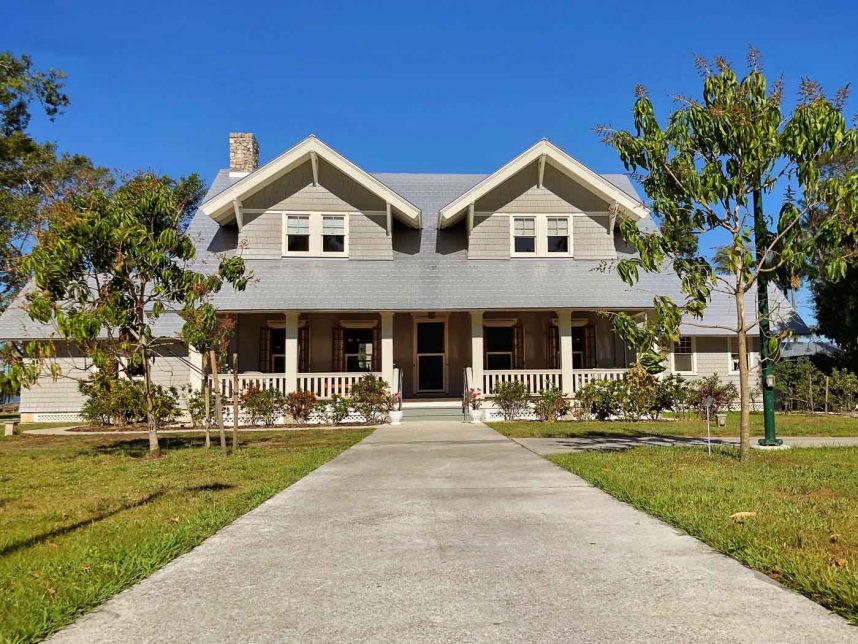
Edison and Ford Winter Estates – Part Two
In last month’s blog entitled “Edison and Ford Winter Estates - Part One”, I introduced you to the winter estates of Thomas Edison and Henry Ford; however, most of the information was dedicated specifically to Edison and his properties because it was Edison who first established his winter home in Fort Myers. Ford did not purchase his estate until 1916.
Now, in Part Two, I will continue on with our tour of the estates and spend more time focusing on Ford’s Winter Estate ‘The Mangoes', the Edison Ford Museum and the Edison Botanical Research Laboratory.
As I mentioned in Part One, there is a lot to see and learn at this beautiful National Register Historic Site.
One of the many things that I enjoy about visiting the homes and museums of individuals who have made important contributions is that feeling you get when you come across information about them in other locations. You immediately understand the significance of that information or object and you are able to connect the dots. Suddenly, the world seems smaller and more connected than it did the day before.
Recently, Jim and I visited the Miners Museum in Glace Bay, Nova Scotia and when we entered the reproduction of a ‘Pluck-Me’ Company Store on the grounds, we noticed an Edison Cylinder Phonograph on the counter and some cylinder records on the shelves. I was surprised to see them in the company store and it made me realize what a huge contribution Edison had made around the world. Our earlier visit to the Edison and Ford Winter Estates had helped us better understand this time in history and the impact it had on our collective and personal histories.
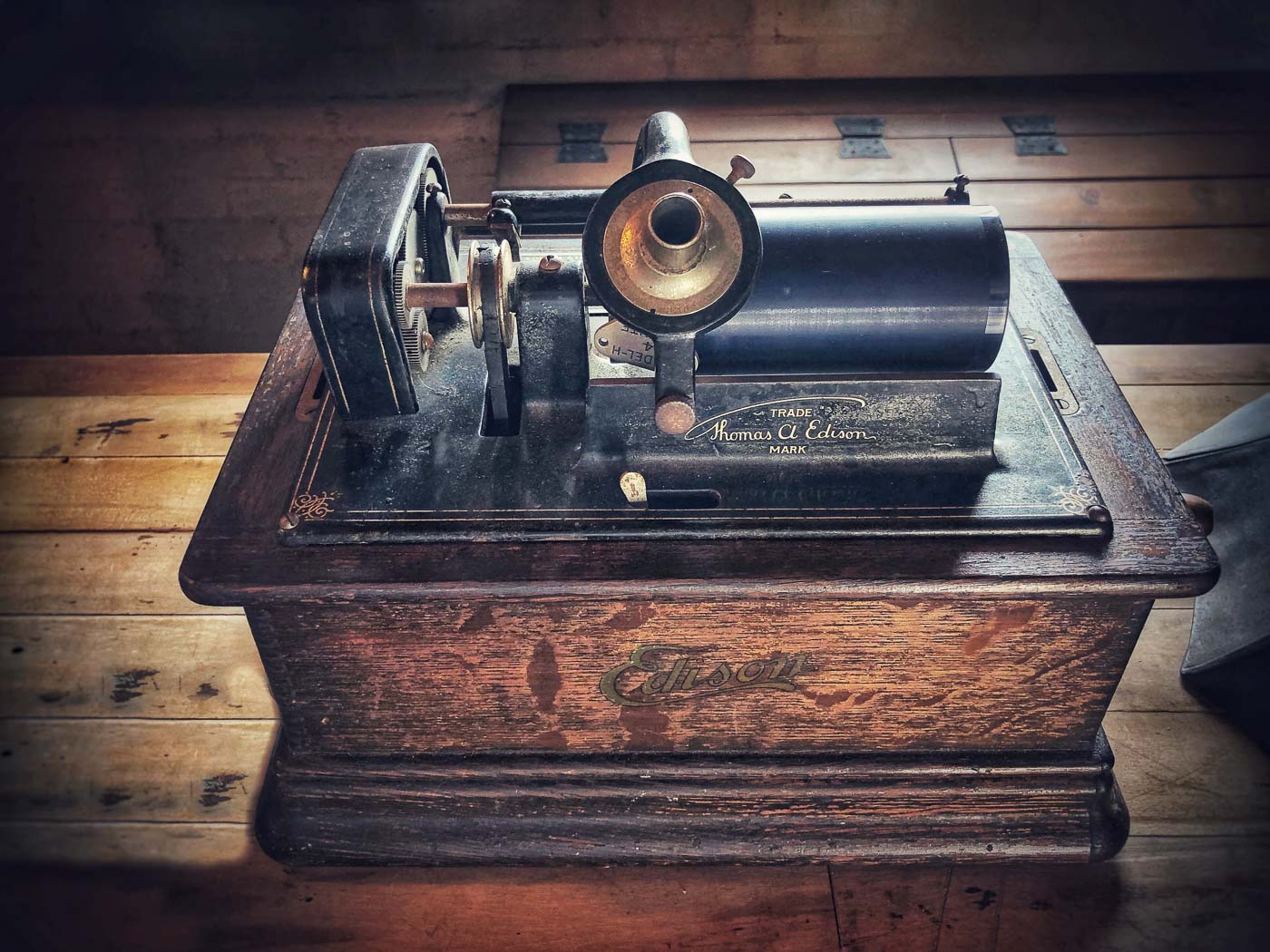
Although we did not see any of Ford's inventions at the Miners Museum, we did learn about the strong bonds that men can make when they work side by side and this reminded me of the friendship between Henry Ford and Thomas Edison.
Henry first met Thomas during the 1896 Detroit Edison Illuminating Company Conference, where Ford was an employee at the time and great admirer of Edison.
In 1912, "Ford asked Edison to design a battery for the self-starter which would be introduced on the iconic Model T." It was this collaboration that began their continuing relationship and friendship for many years to come.
Two years later, Edison invited the Ford Family to visit him in Fort Myers for a camping trip to the Everglades and from there, the Fords became regular guests at Seminole Lodge.
The Ford and Edison families spent a great deal of time together fishing, boating and exploring southwest Florida.

(This statue of Henry Ford by artist D. J. Wilkins stands on the edge of the two properties at the Edison and Ford Winter Estates.)
Ford and his family enjoyed their time in Fort Myers often vacationing around Edison's February 11 birthday celebration.
In 1916, Henry learned that the property next to Edison was for sale, and he purchased 'The Mangoes' that year for $20,000. The home was originally built in 1911 by New York entrepreneur Robert Smith.
The Fords' estate featured a Craftsman-style bungalow and grounds lush with citrus trees and tropical plants. From the grounds, the Fords could look out onto the Caloosahatchee River and view the Edisons' dock.
In 1928, Ford added two wings to the home, providing a guest bedroom and quarters for his serving staff.
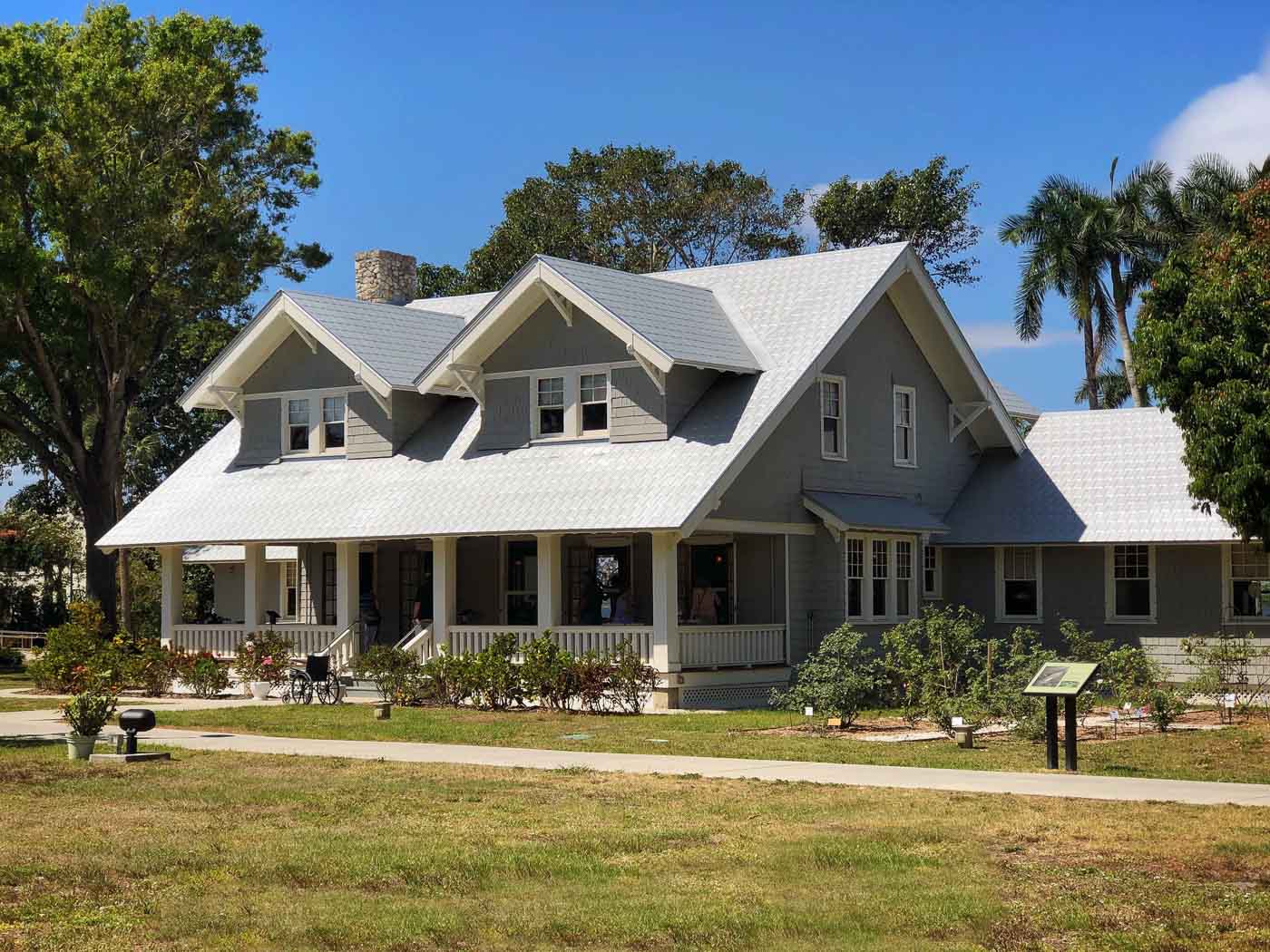
Below, are a few images taken with my iPhone from the Ford Estate. The first image being the master bedroom on the first floor and the following images include the living room and dining room.
The living room showcases elements of Craftsman-style architecture, such as the built-in benches and a double mantle.
The antiques in the living room and dining room are set up to represent the style and tastes of the Fords.
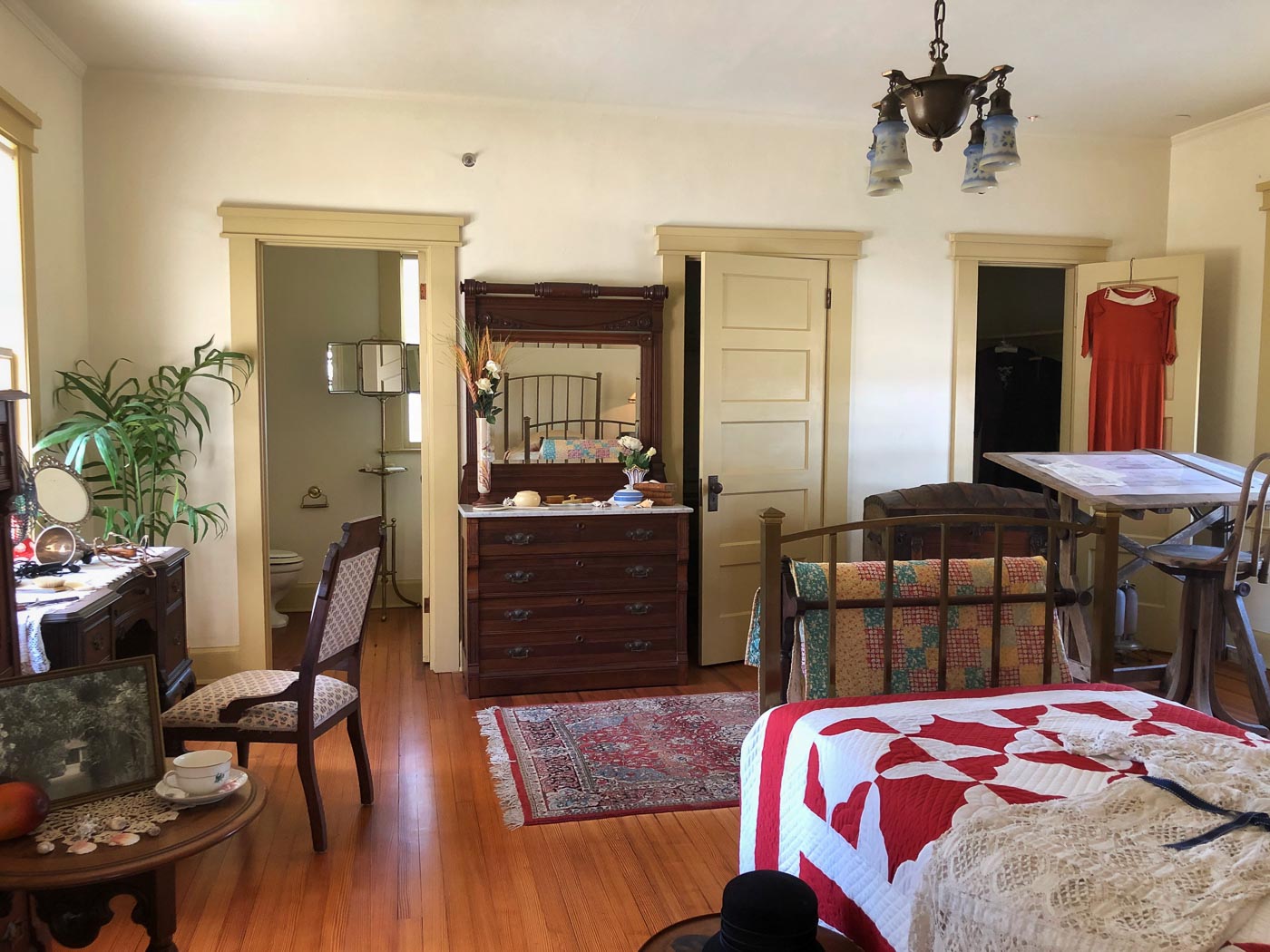
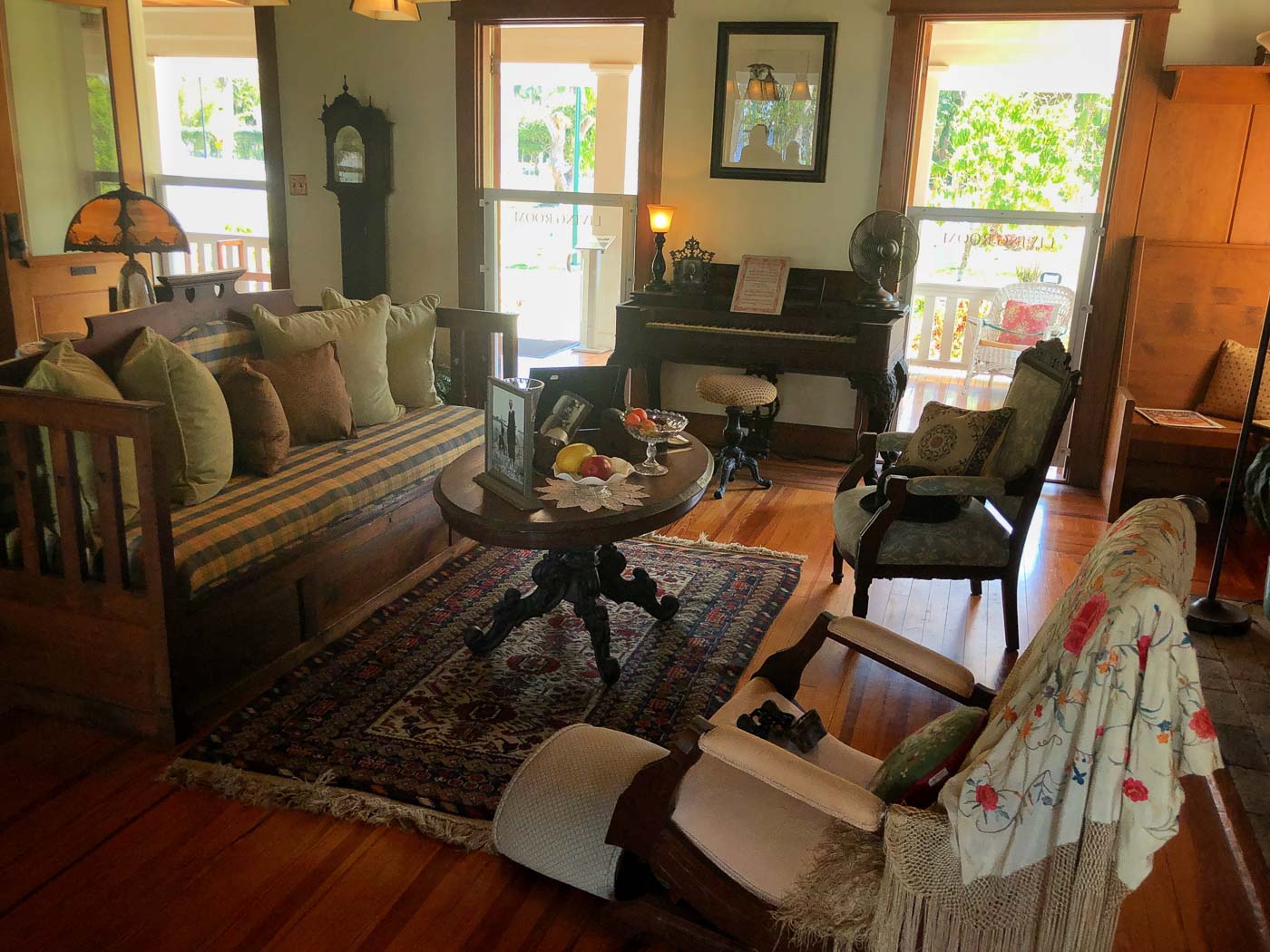
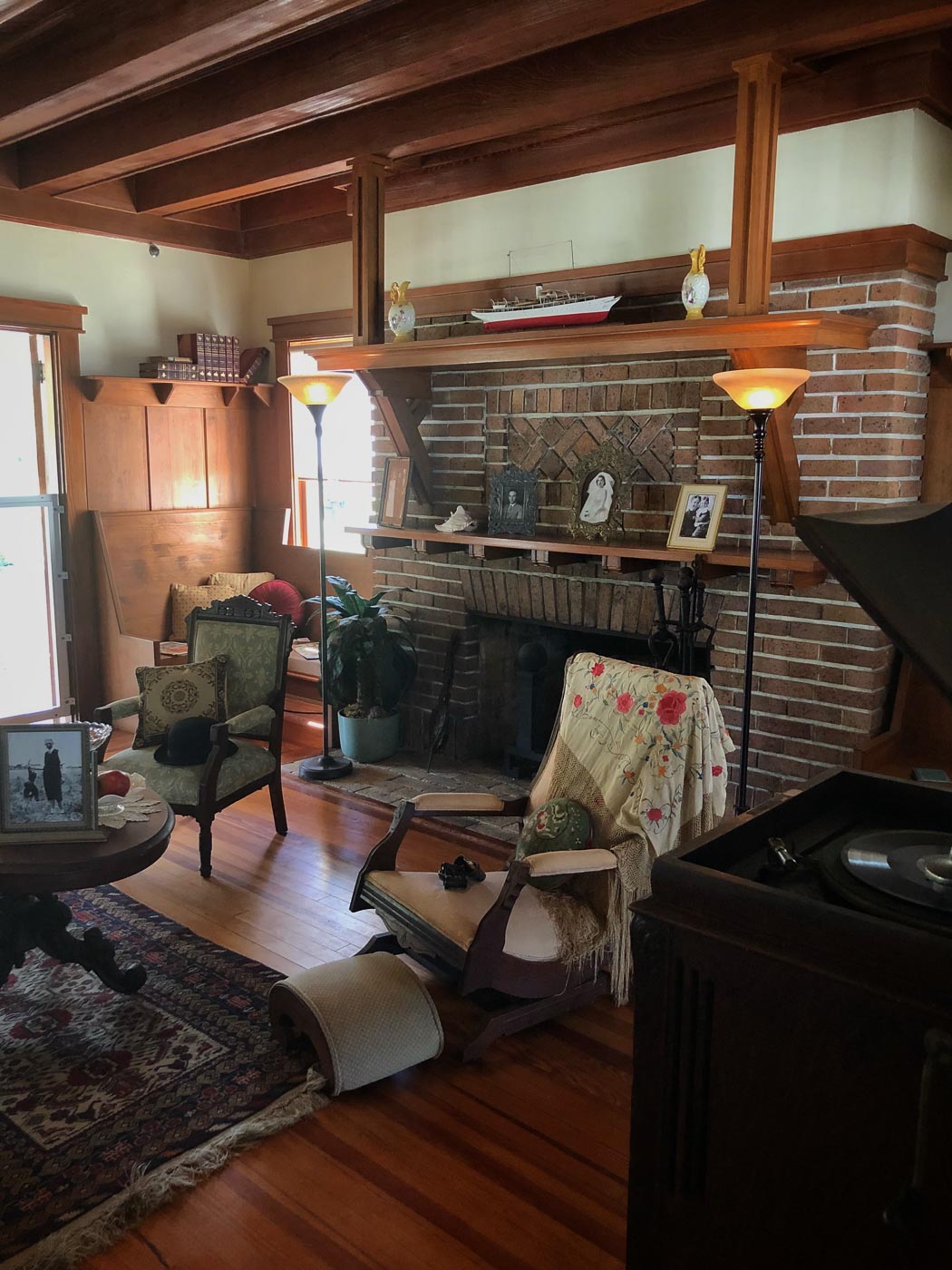
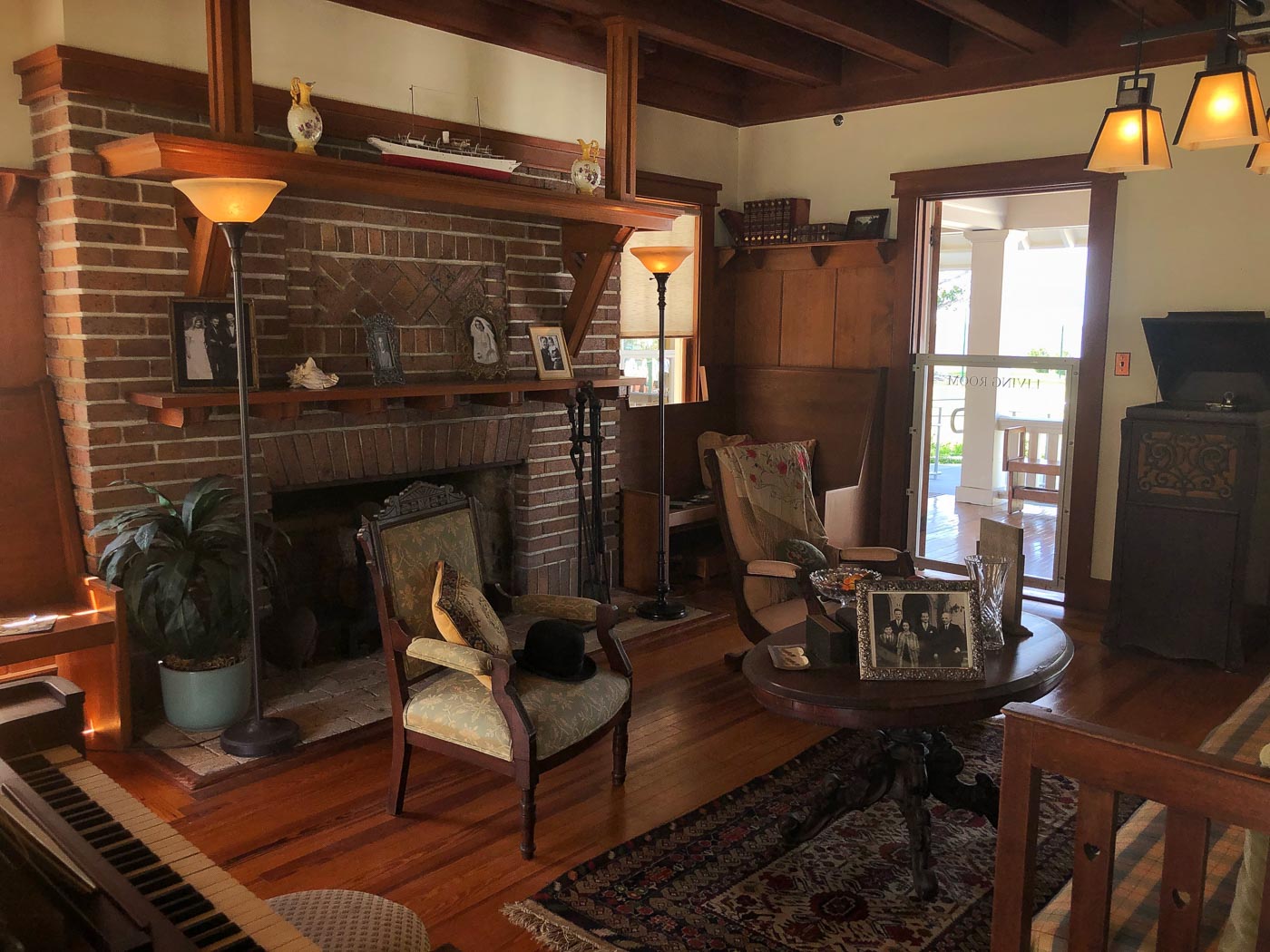
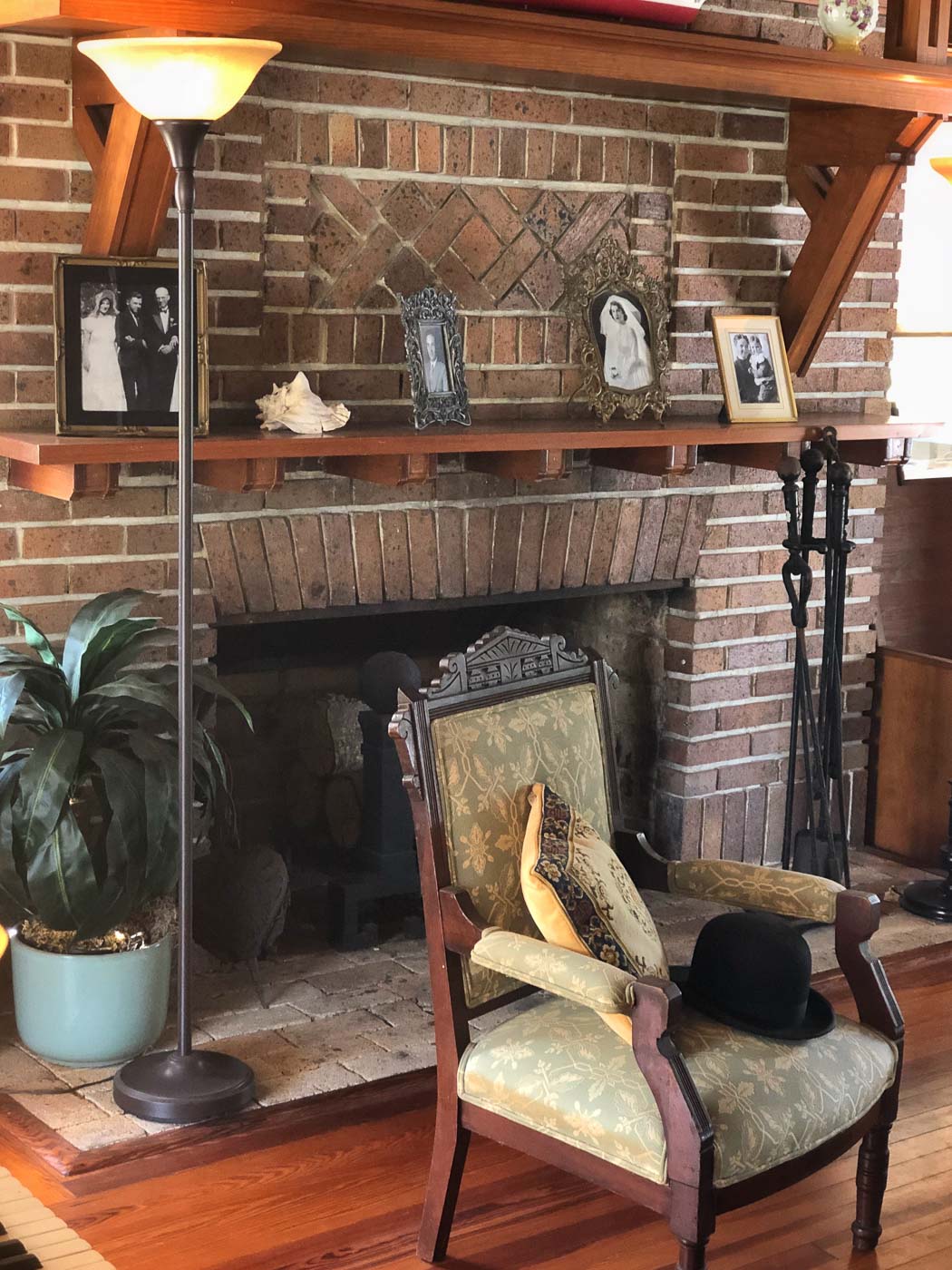
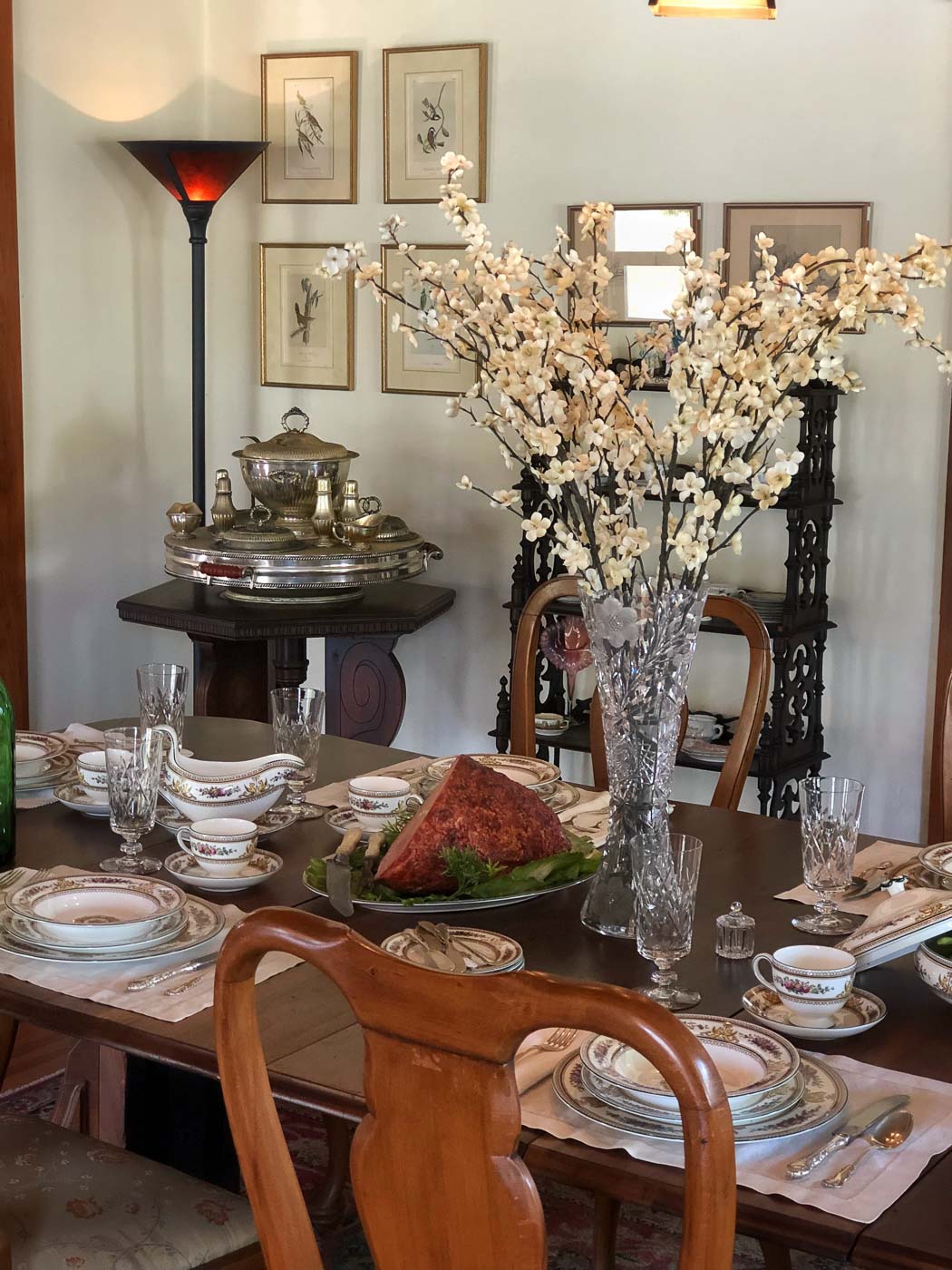
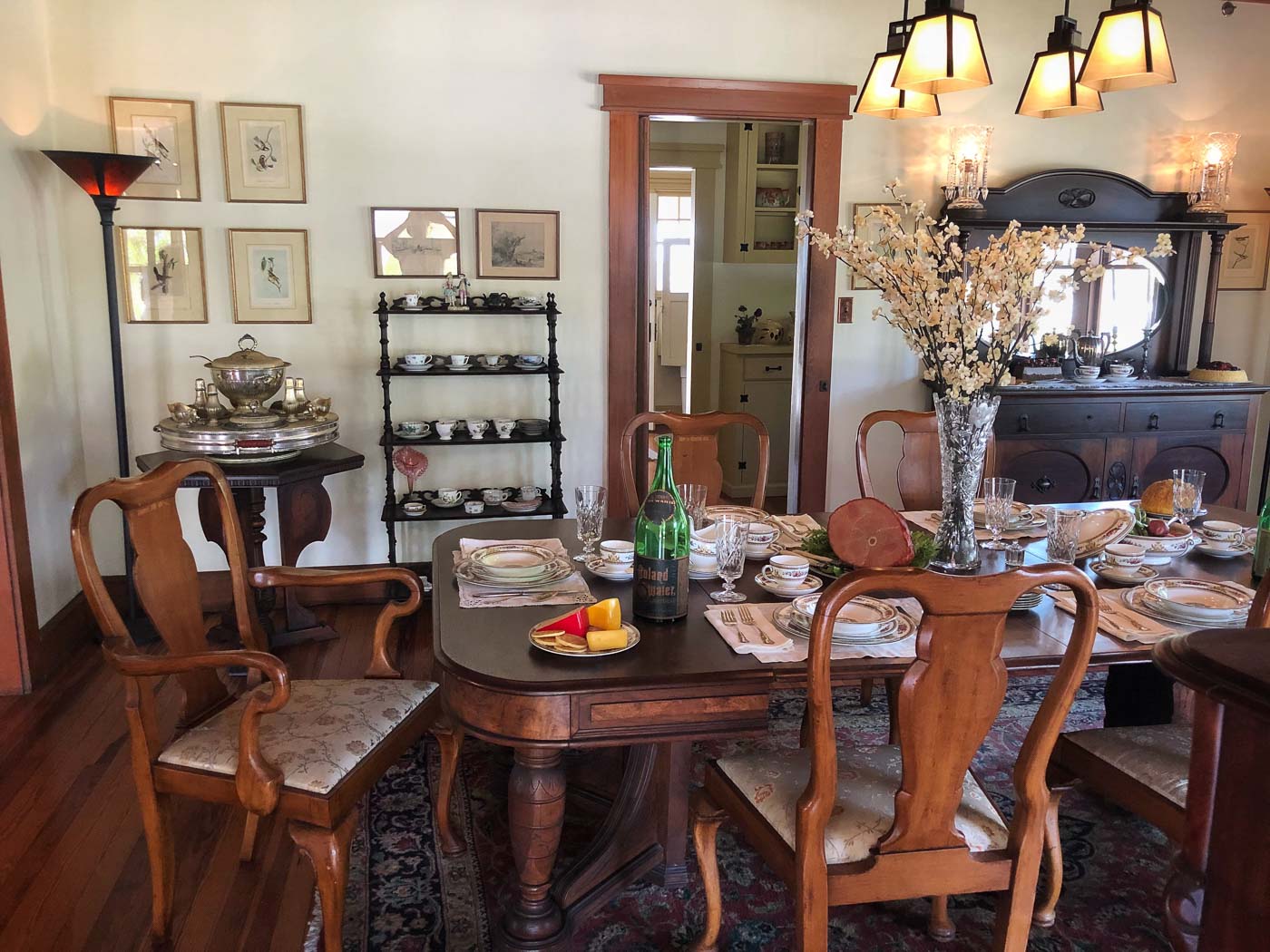
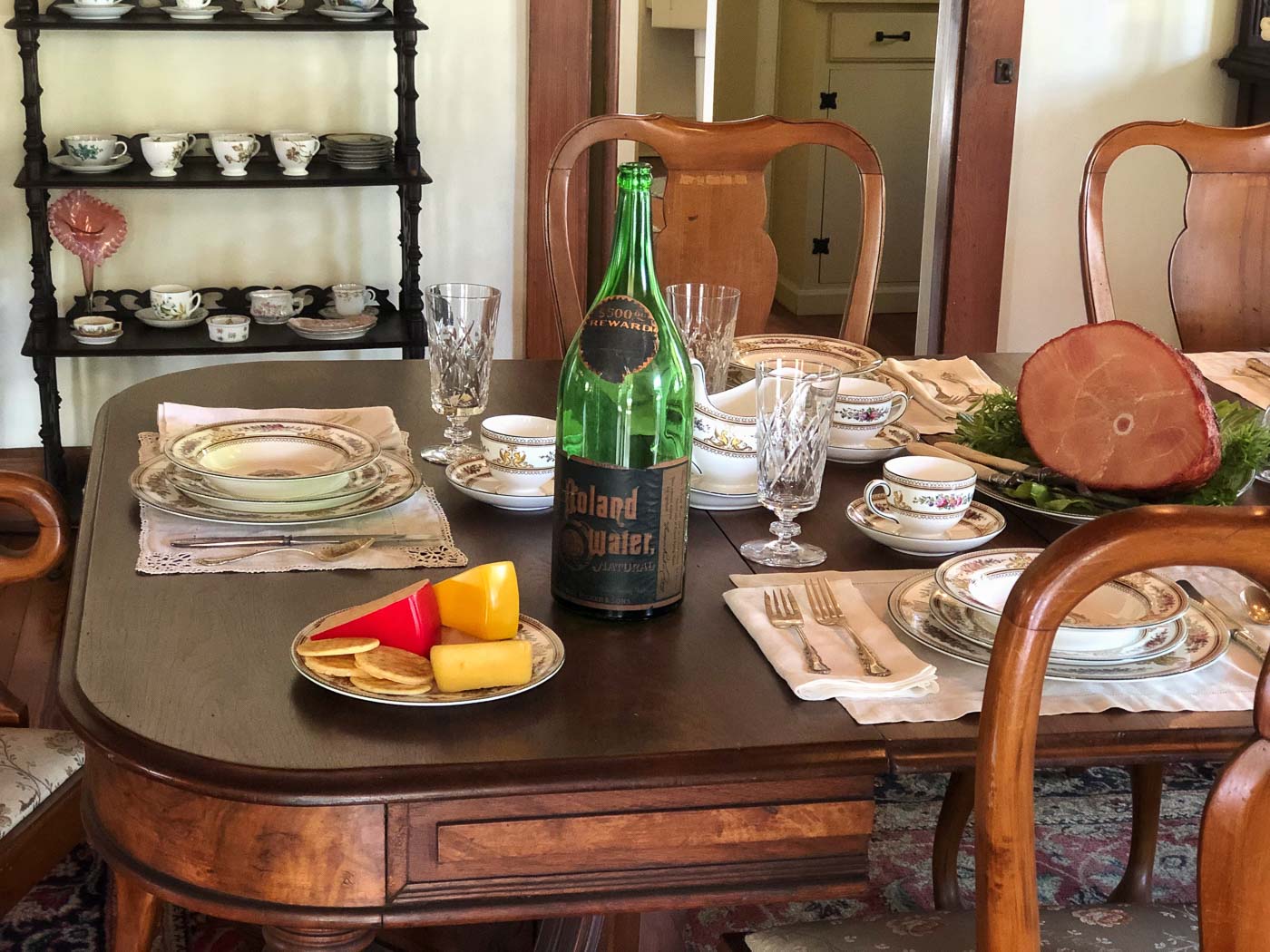
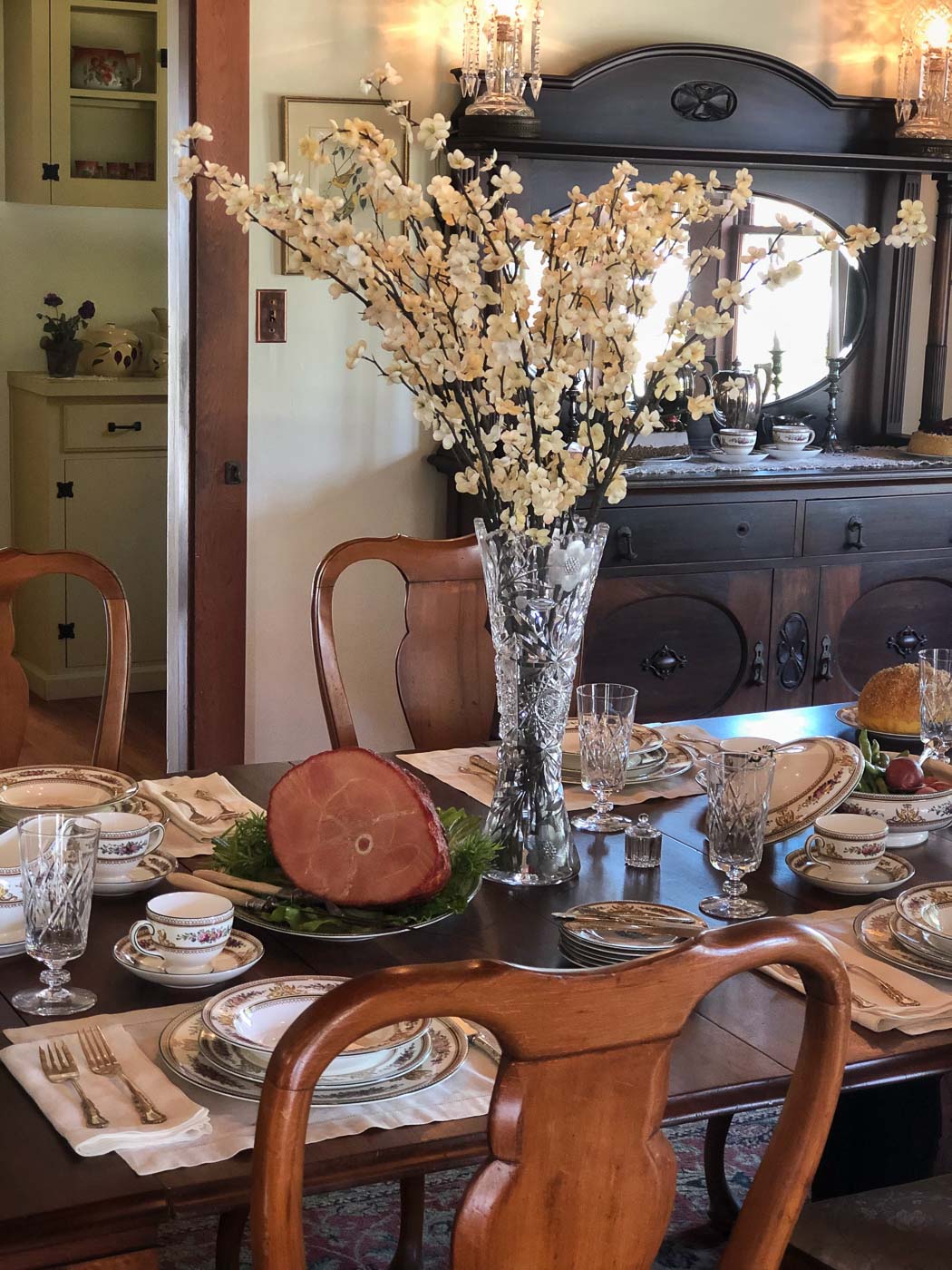
After the death of Thomas Edison in 1931, Henry Ford spent less time at The Mangoes. His last visit was in 1934.
Ford rented the property for years and finally sold it in 1945 to local residents Thomas and Gladys Biggar for $20,000. The same price that Ford paid for the estate in 1916.
The Biggar family made it their family home for more than 40 years.
In 1988, Mrs. Biggar sold the home to the City of Fort Myers for $1.5 million and after some restoration to its 1920s appearance, the home was opened to the public in January 1990.
Next to the Ford Estate, you will find two more buildings:
- The Ford Automotive Display. The Biggar family added this building to the property after purchasing the home from Henry Ford in 1947. Inside, you will find antique vehicles from the Edison Ford collection on display; as well as, restrooms.
- The Ford Cottage Shoppe. This building was originally used as Ford's garage and caretaker's residence. Today you will find unique gifts and refreshments available.
Before you move on to the Edison Ford Museum or the Edison Botanical Research Laboratory, make sure you stop by the huge Mysore or Brown Woolly Fig next to the Caloosahatchee River. This tree is quite impressive.
Here are a few details about the tree which I found on a sign at the base of the tree:
"Mysore or Brown Wooly Fig", Ficus drupacea, Moraceae
Origin: China, Southeast Asia, Indian subcontinent and Northeastern Australia
Circumference: 346 inches
Height: 108 feet
Awarded "Florida Challenger" status in the Florida Champion Tree program in 2015.
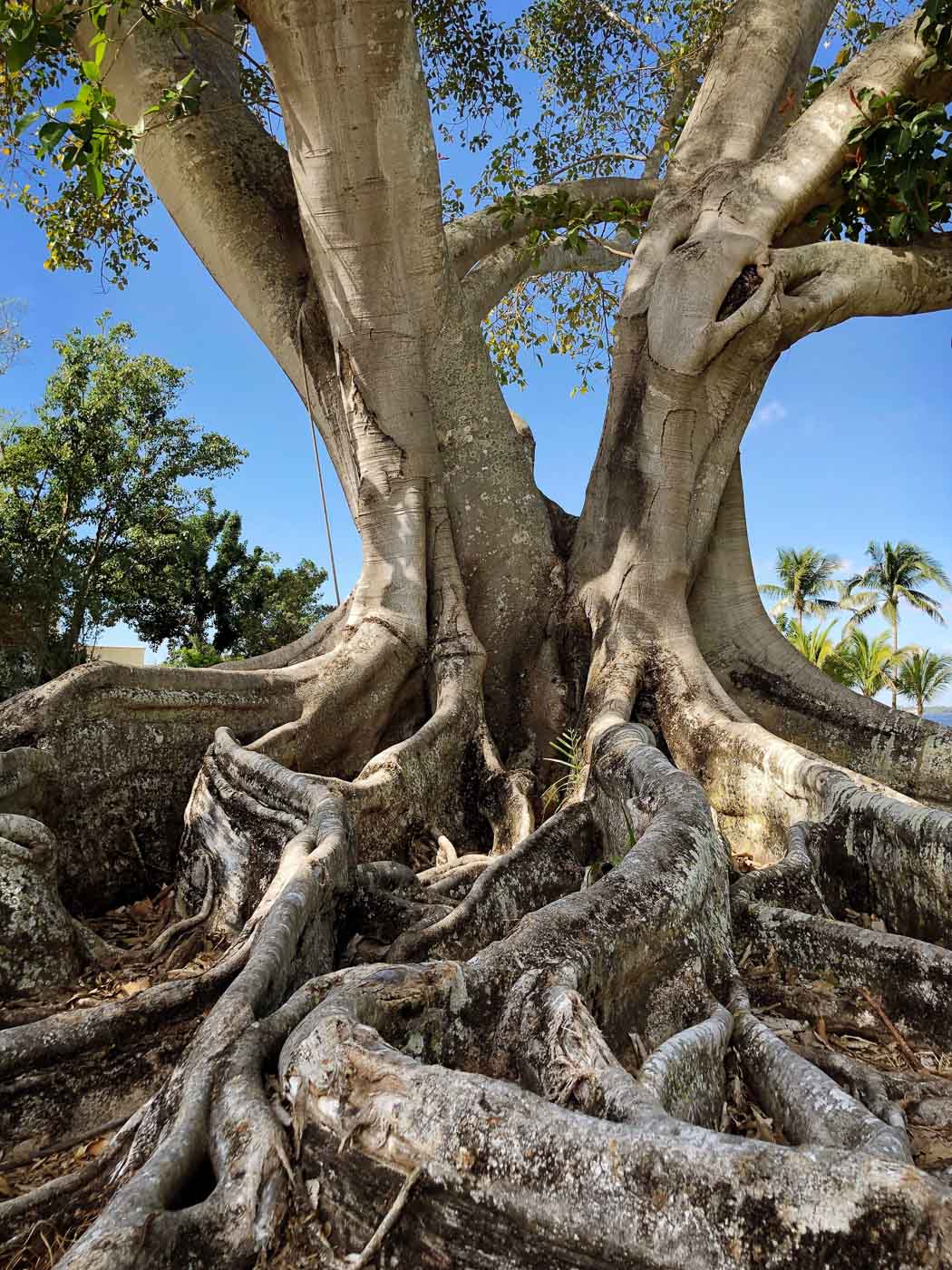
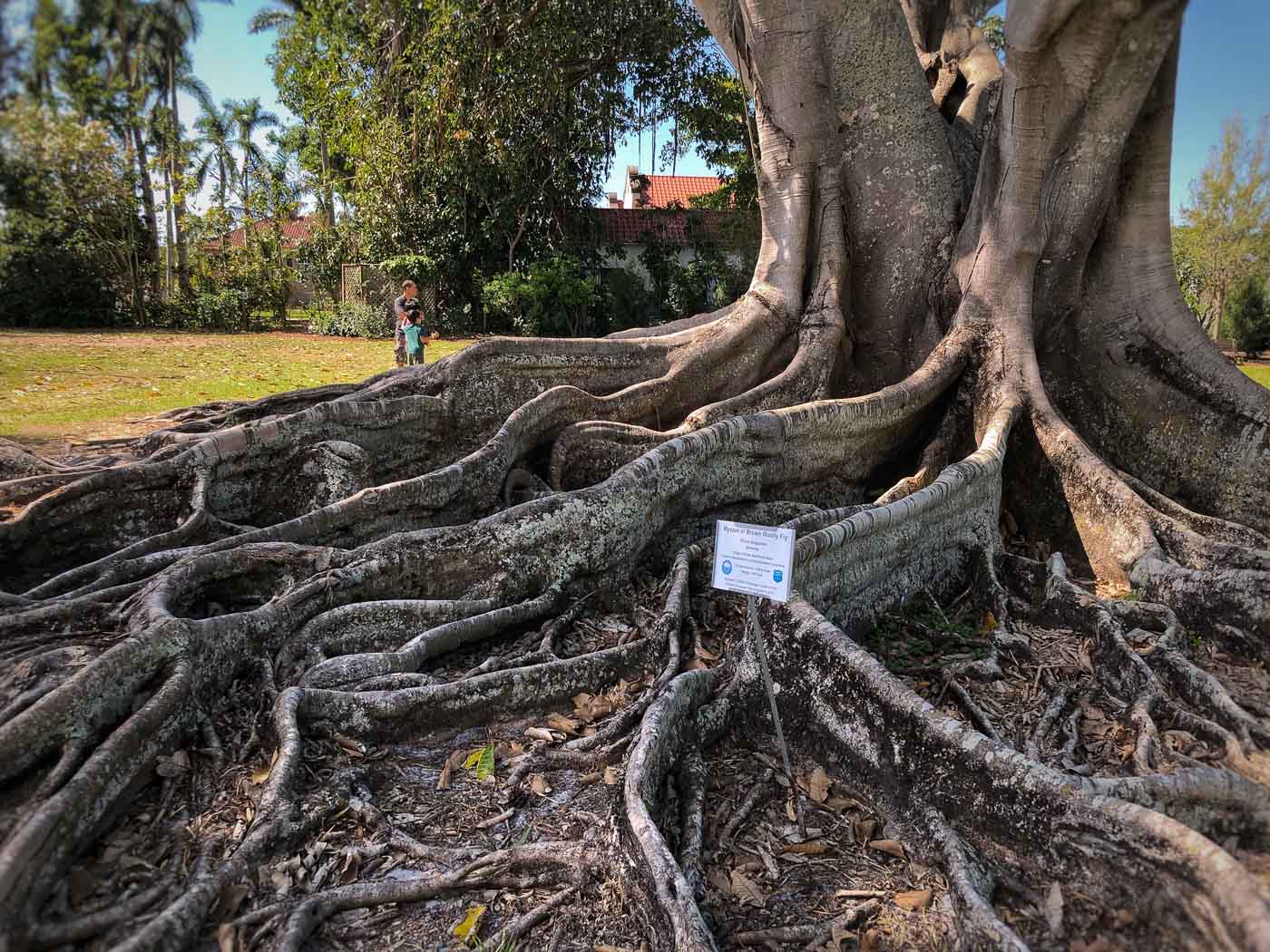
Below is a photo of myself and our Lead Site Historian, Ryan Boyer. Ryan is quite knowledgeable about The Edison and Ford Winter Estates and he has several interesting stories to tell you about Edison and Ford.
If you want to get the most out of your visit to the estates, I would recommend taking one of the guided tours.
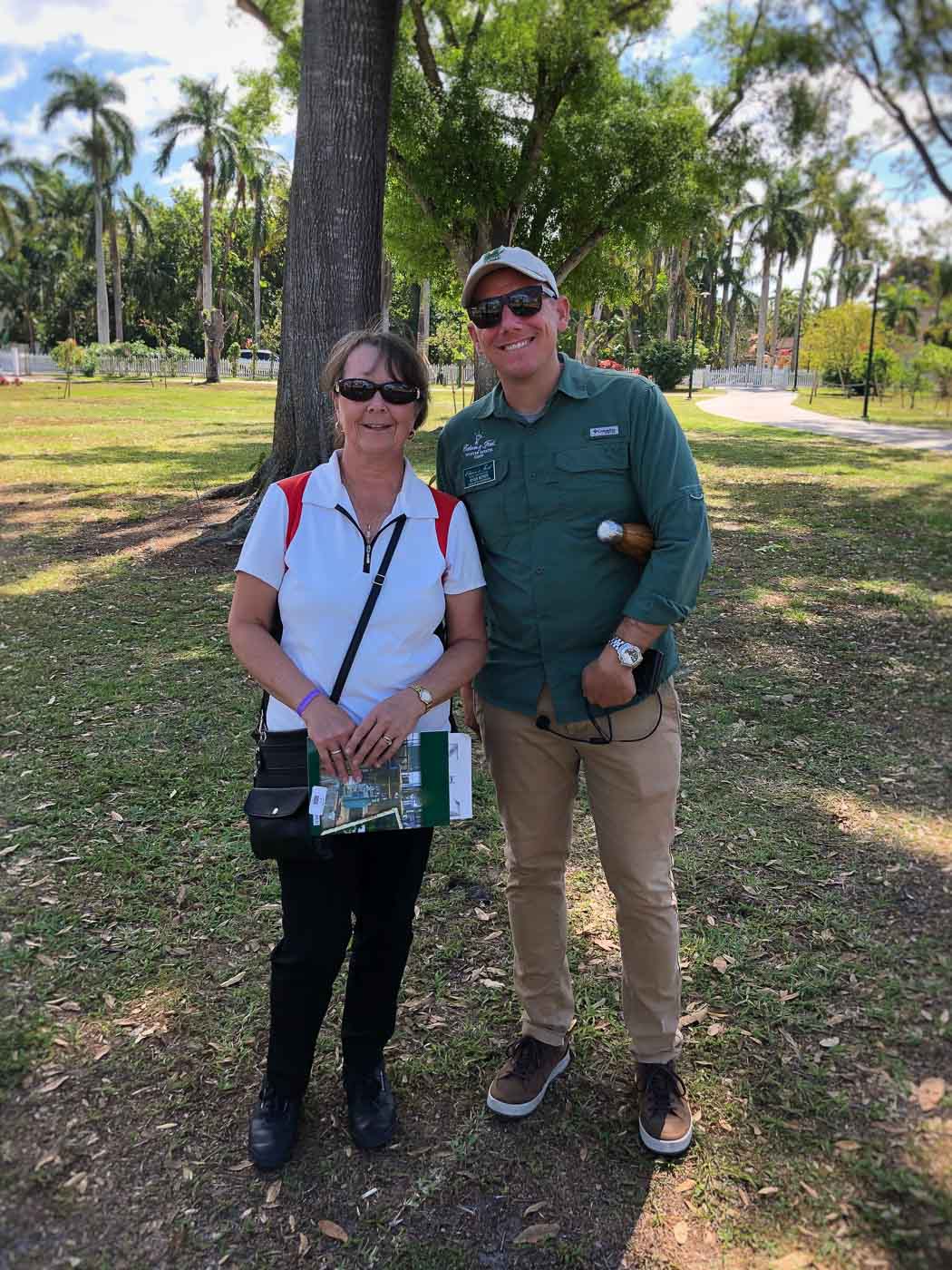
When we finished our guided tour, we headed over to the Edison Botanical Research Laboratory to learn more about the work that Thomas Edison, Henry Ford and Harvey Firestone had done together.
Natural rubber was an important resource in the early 20th century and during World War I, as the price rose and inventory diminished, Thomas Edison, Henry Ford and Harvey Firestone searched for a plant that could produce enough rubber in the event of a shortage. It seemed that Florida's subtropical climate was an ideal location for their research.
In 1927, the three men each contributed $20,000 and formed the Edison Botanic Research Corporation (EBRC) which was to be led by Thomas Edison. The following year, the Botanical Laboratory was built in Fort Myers. The laboratory contained a grinding room, chemical processing area, machine shop, dark room and office.
The EBRC was active until 1936, five years after the death of Thomas Edison, when "the project was then transferred to the United States Department of Agriculture. The plant samples were relocated to Savannah, Georgia, and $80 million was earmarked for further research."
During the restoration of the Botanical Laboratory, historical documents and photos were used to ensure that the laboratory was presented just as it was during Edison's time. "In 2014, the laboratory became the first site in Florida to be designated by the American Chemical Society as a National Historic Chemical Landmark."
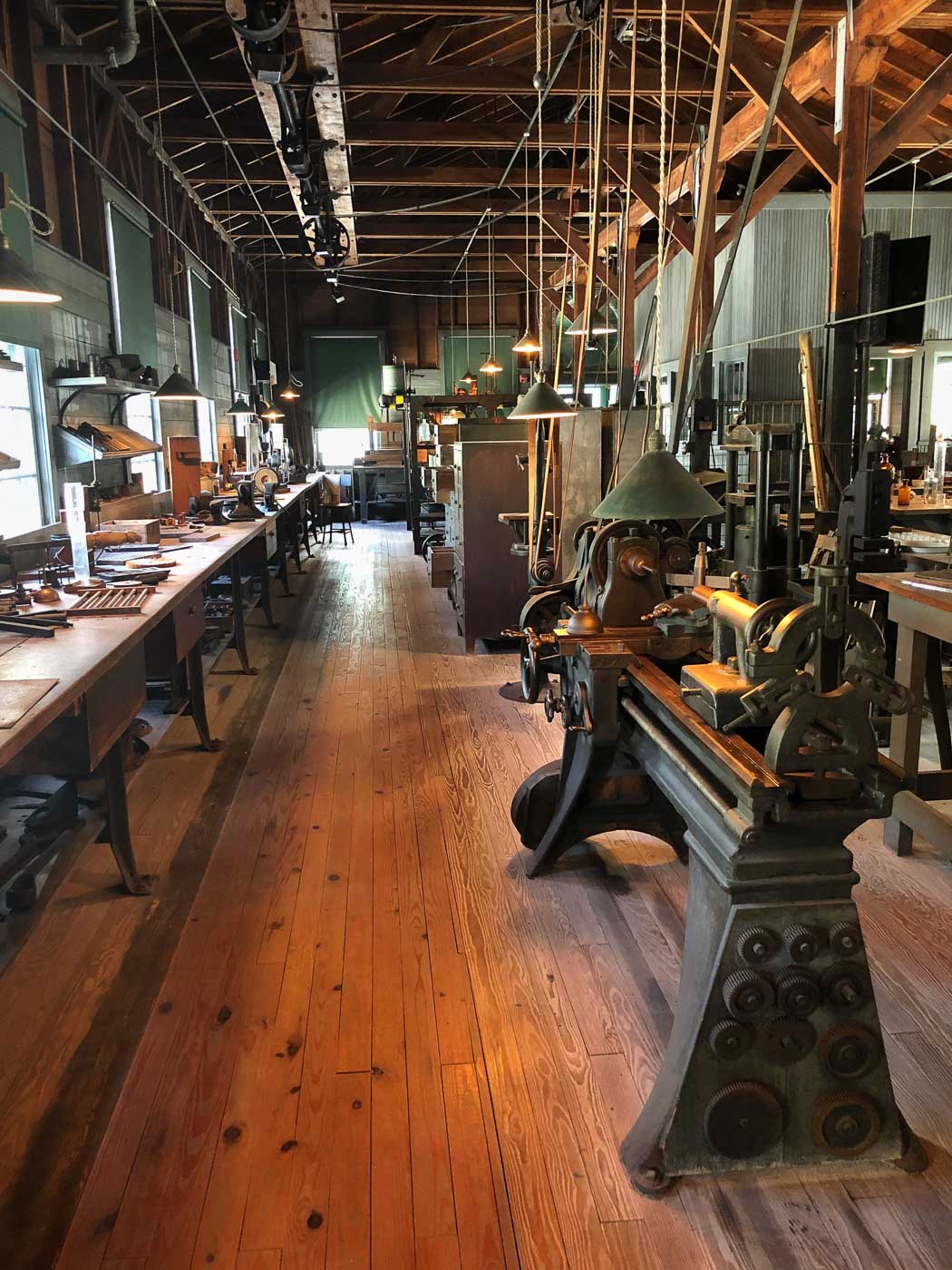
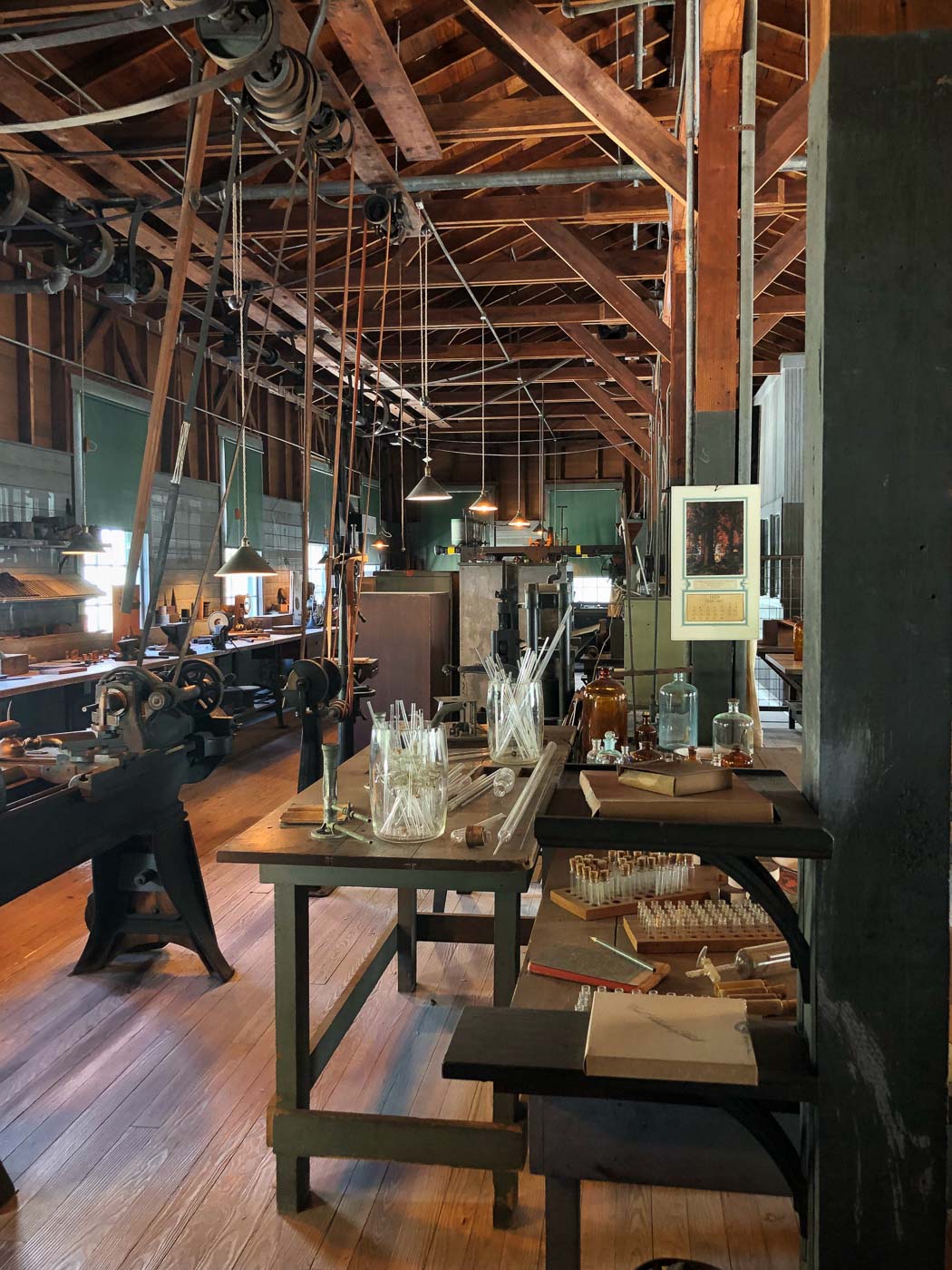
In the two photos below, you can see the "Soxhlet extractor in the chemical processing area, which contained seven tables outfitted with water, gas and electricity. Tests were conducted in an assembly line process to determine the amount of latex in each plant."
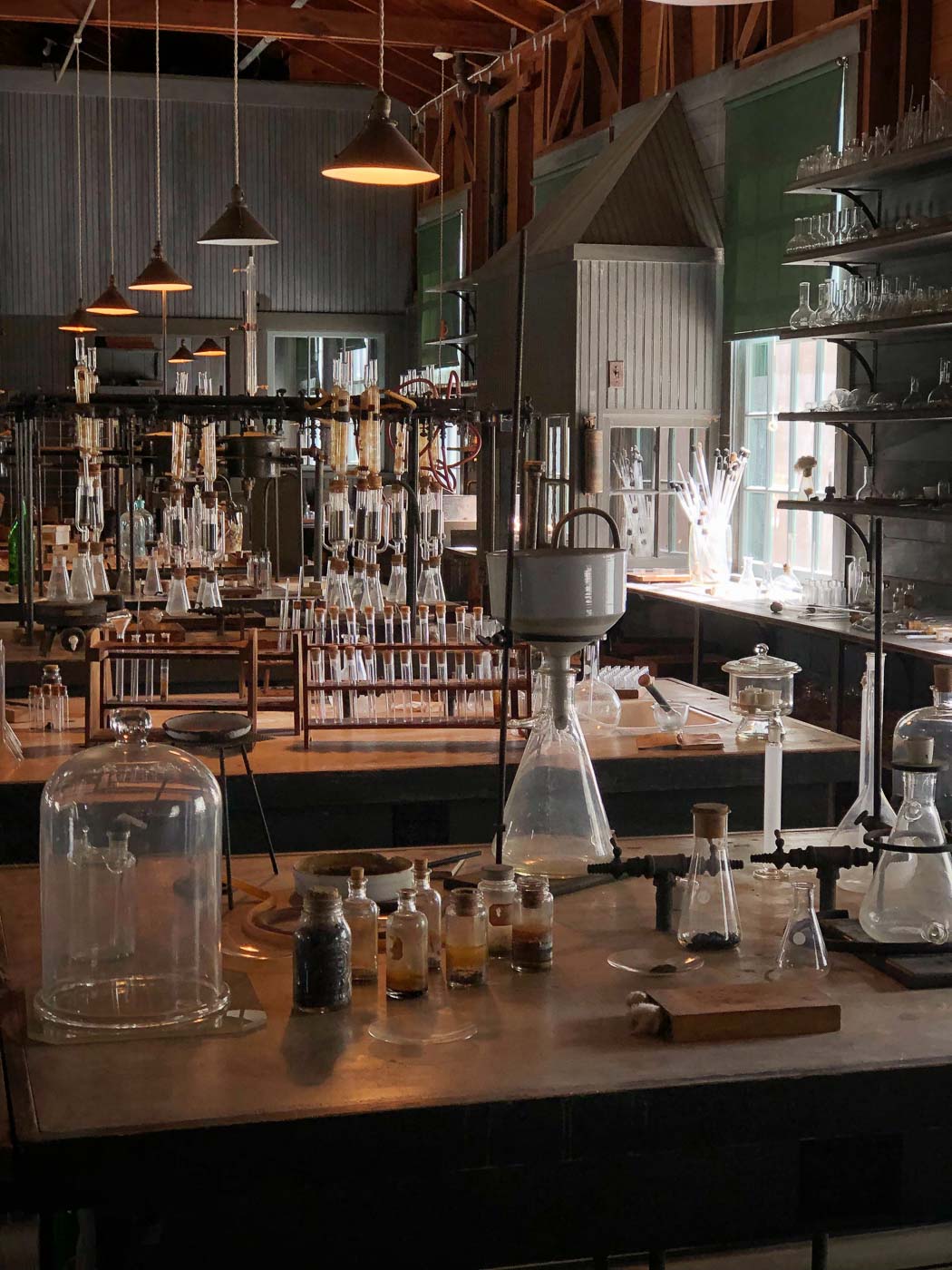
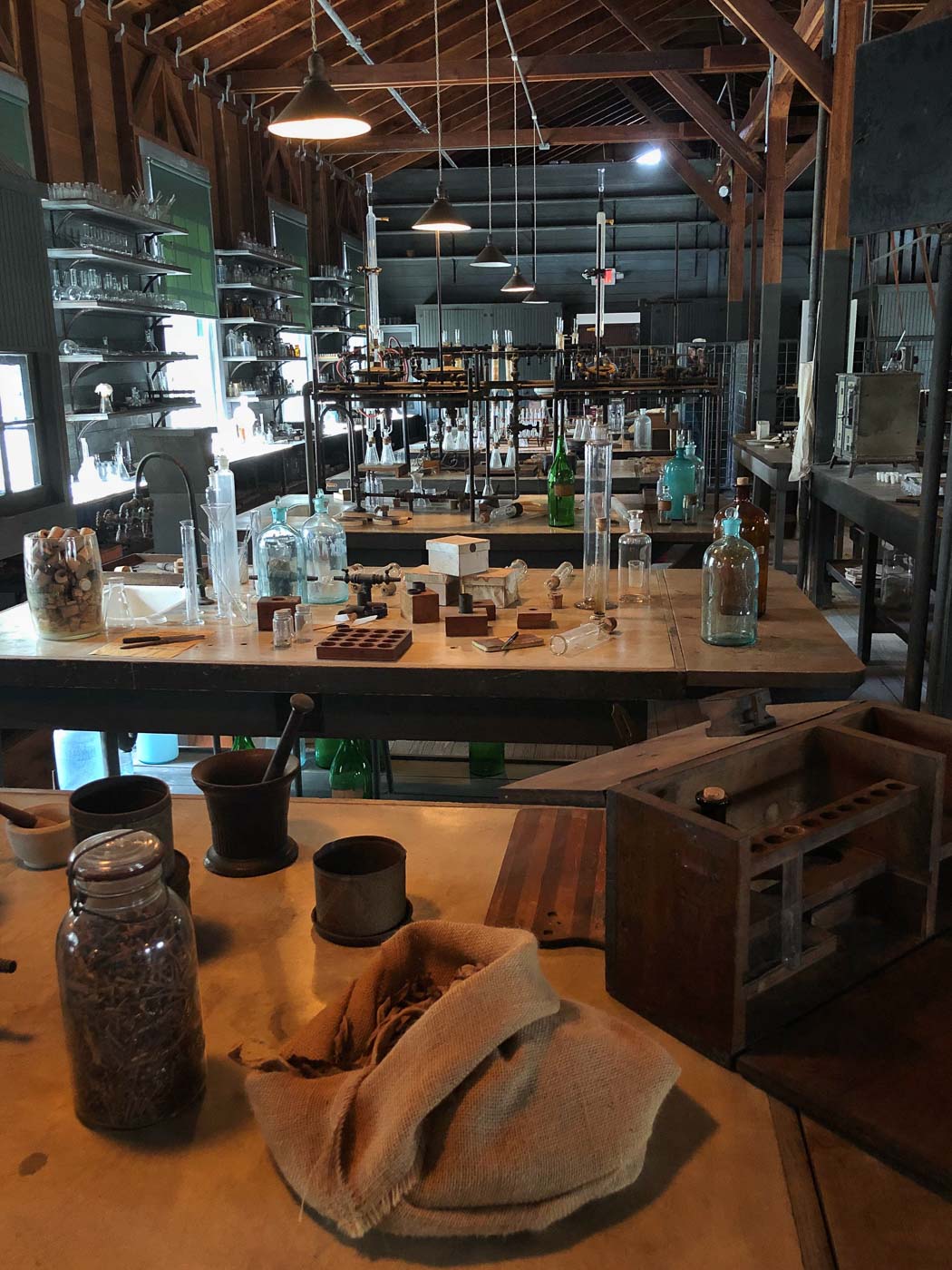
"To locate rubber producing plants, Edison created a global network of plant collectors. In total, over 17,000 plant samples were tested. Edison eventually discovered a source in the goldenrod plant.
Edison worked with botanist Luther Burbank to cross-pollinate the plants, which grew up to 12 feet tall. Edison's work on cross-pollination contributed to the Plant patent Act of 1930."
Below is a photo of the office and the large goldenrod plant.
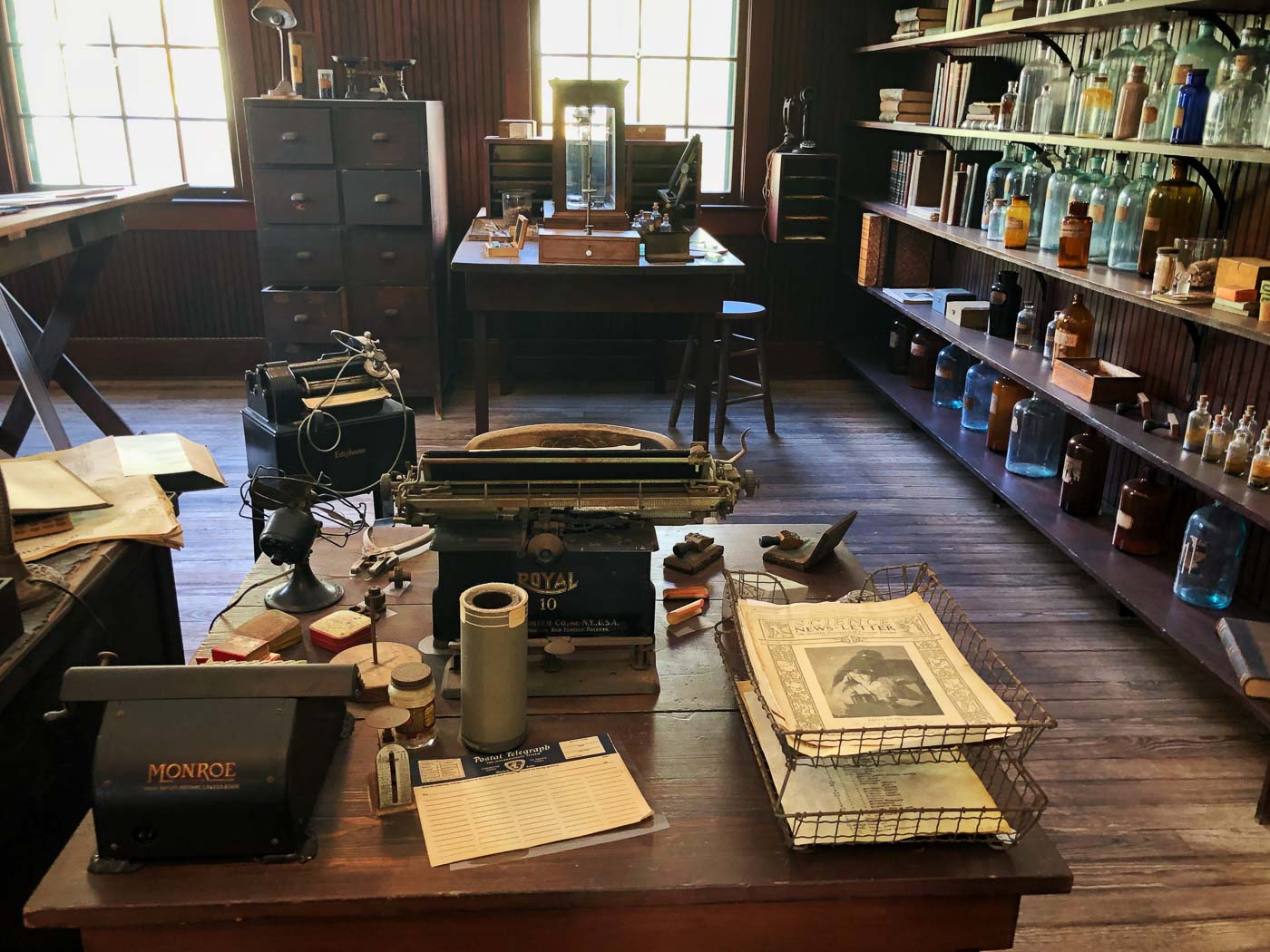
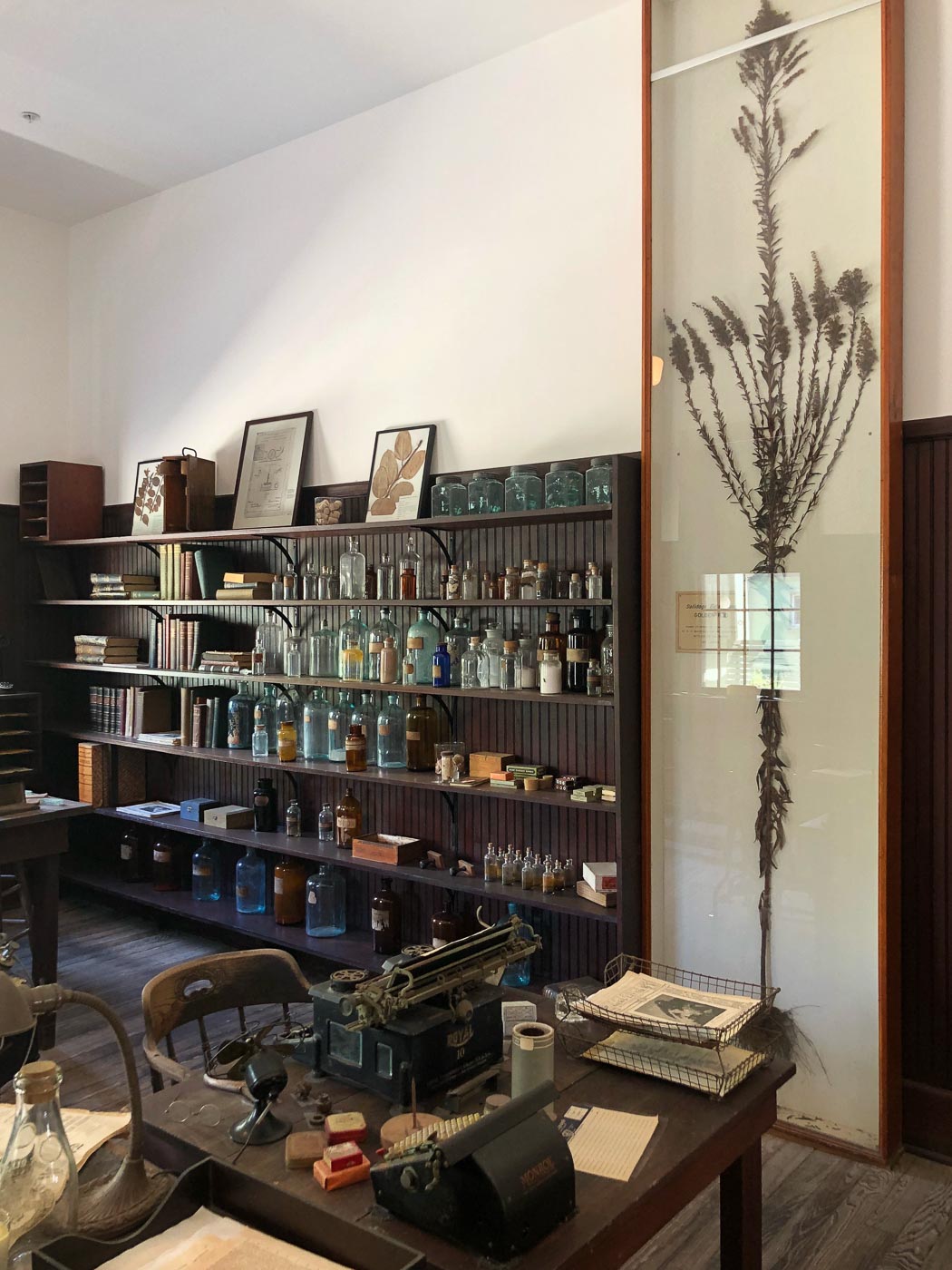
Our final stop during our visit was to the Edison Ford Museum. In this building, we found several galleries interpreting the lives and innovations of Thomas Edison, Henry Ford and their families. We also experienced exhibits of Edison inventions, saw Ford automobiles and viewed special exhibits reflecting history, science and the arts.
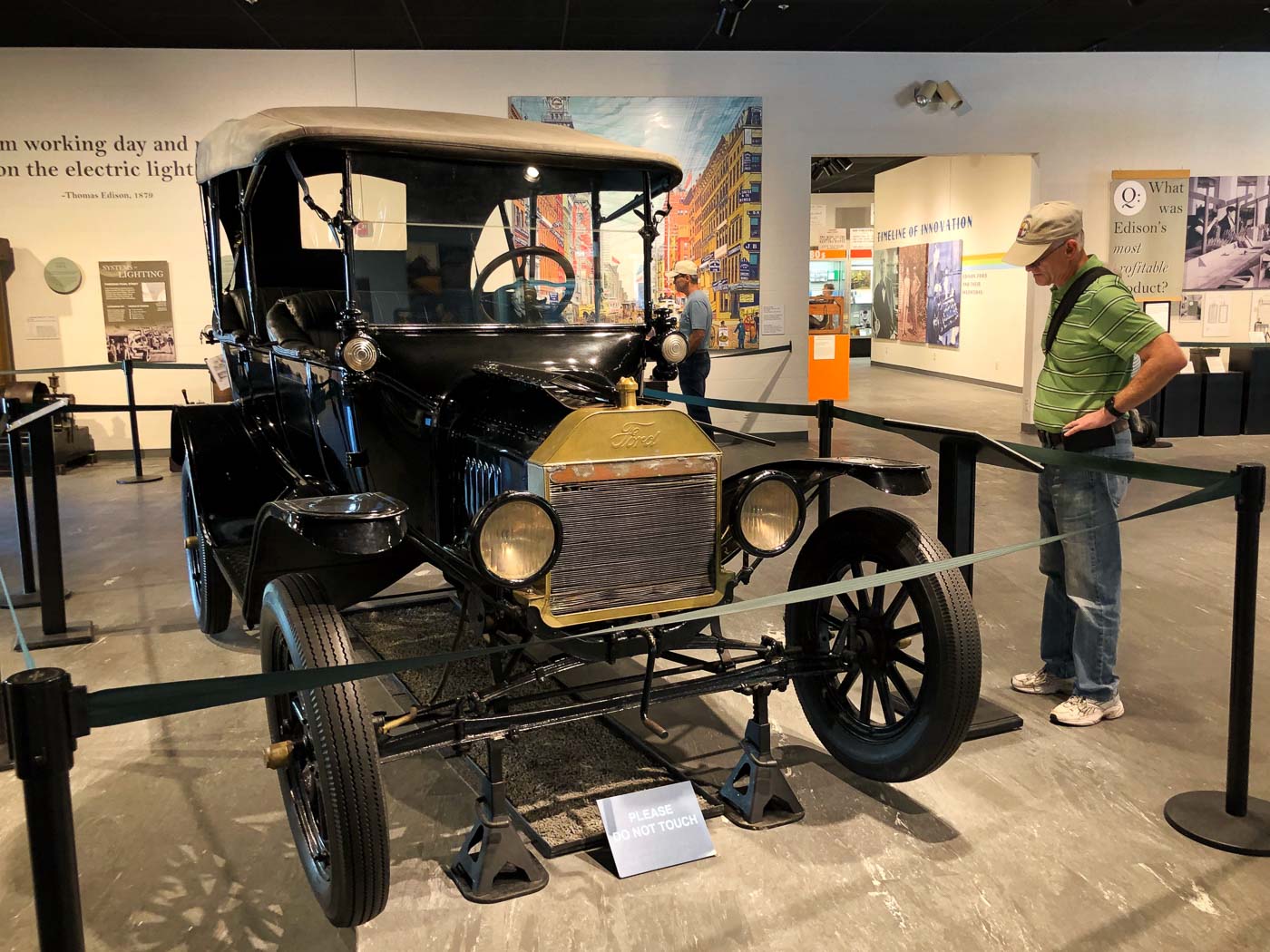
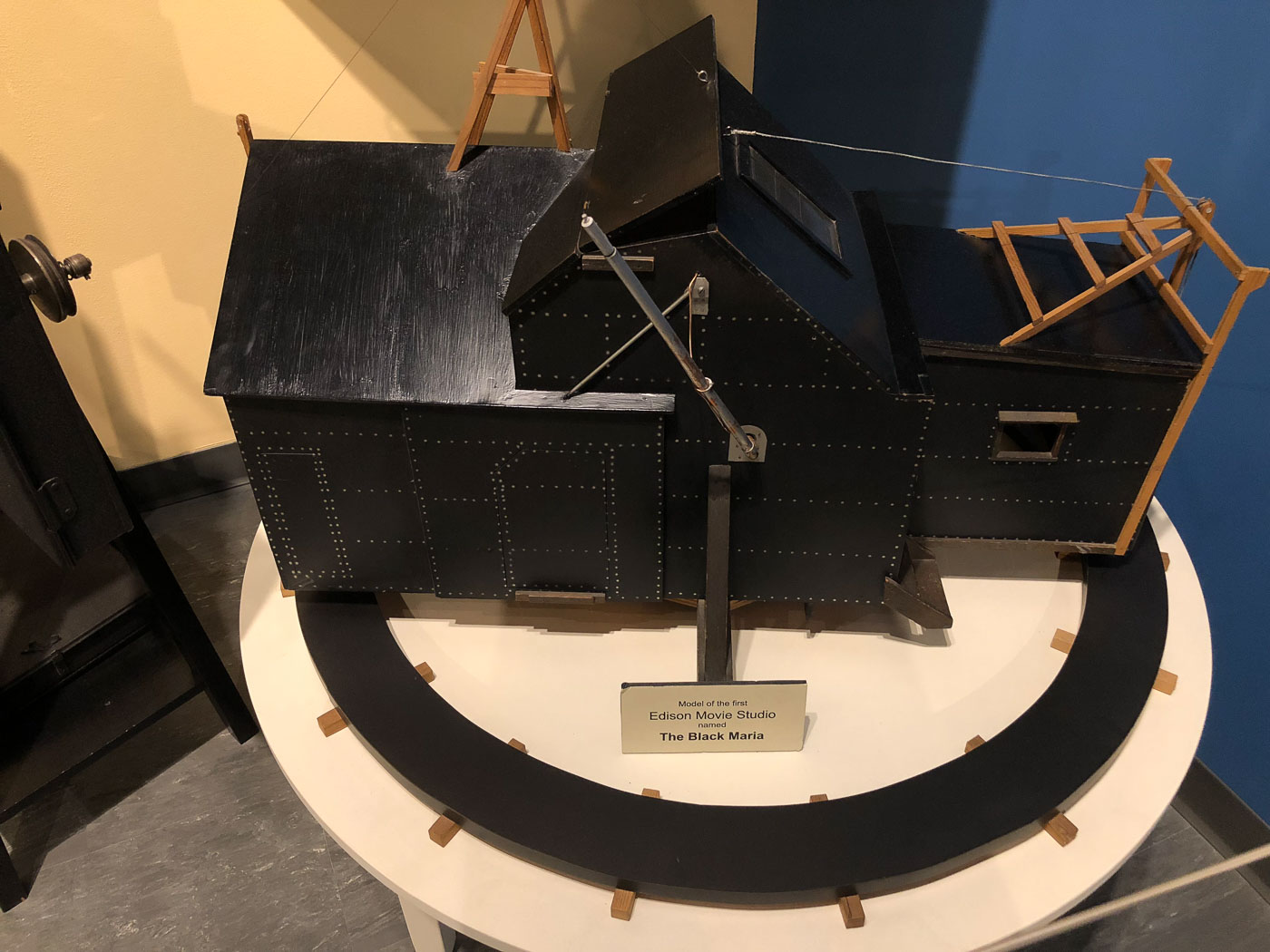
In the Edison Ford Museum, we also found an excellent exhibit entitled "Into the Wild" which talked about the group who called themselves the 'Vagabonds'. This group included Thomas Edison, John Burroughs, Henry Ford and Harvey Firestone.
The trips began in 1916 and "after 1924, the growing fame of the campers brought too much public attention and the trips were discontinued."
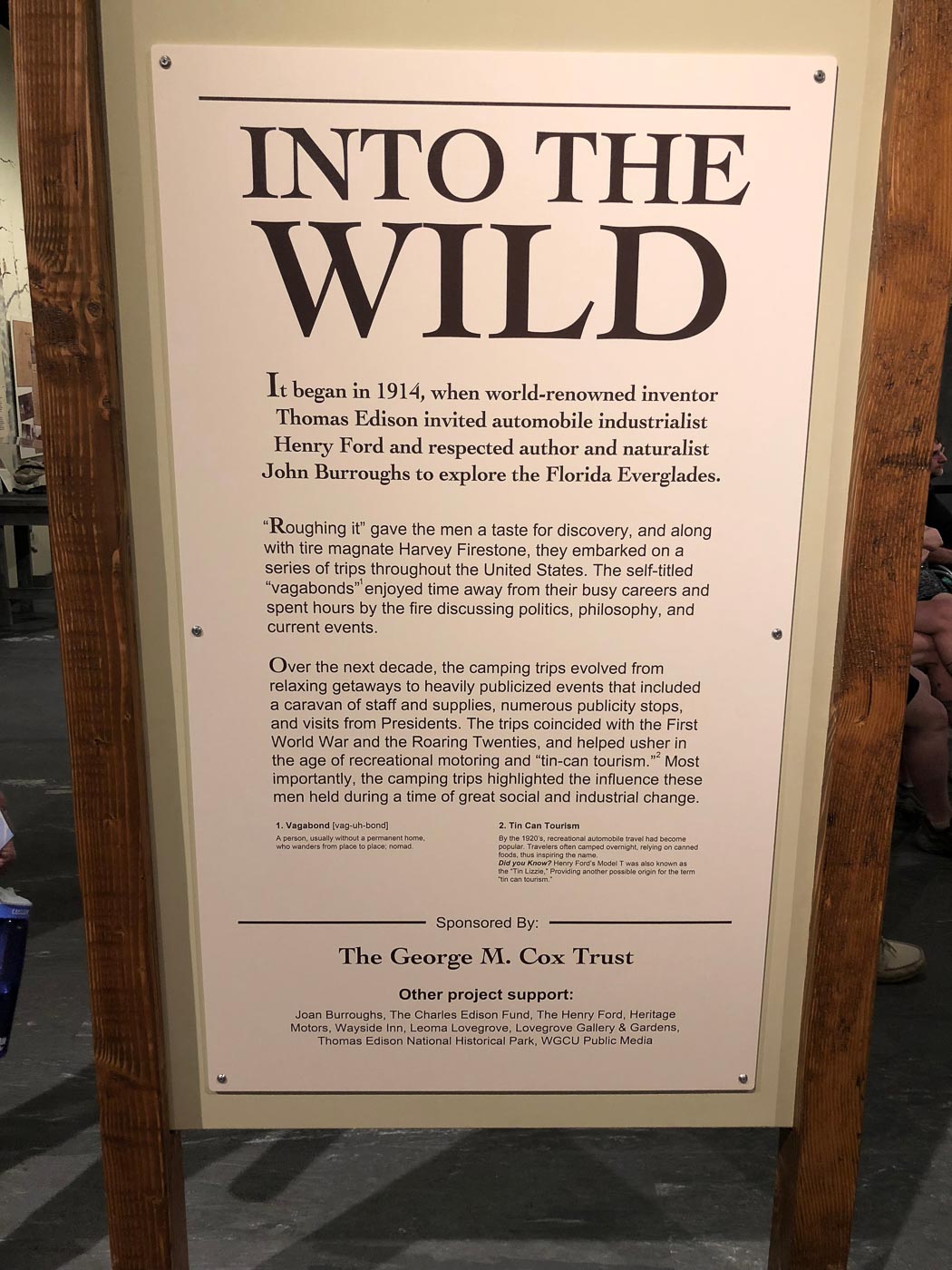
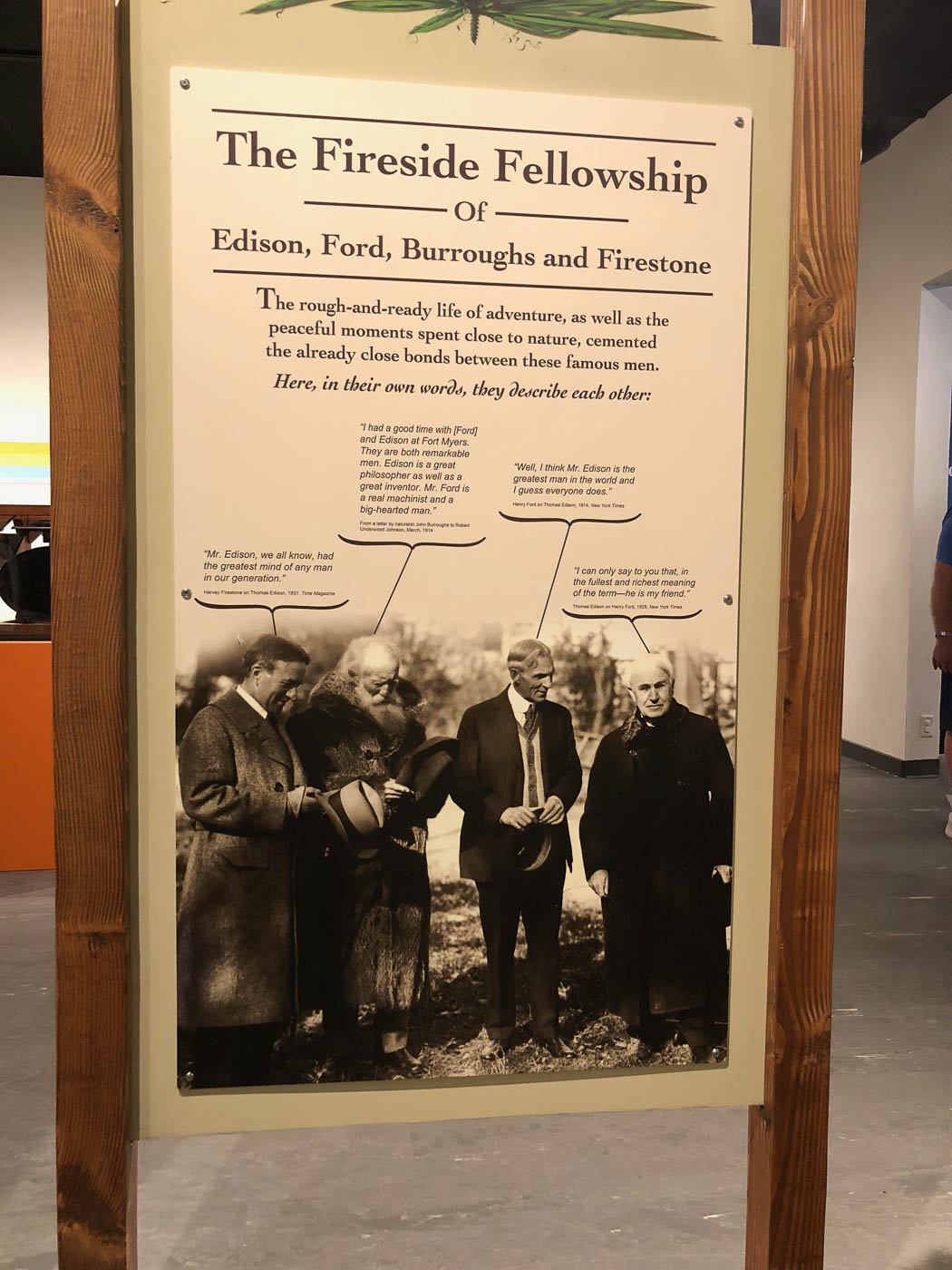
I hope that you found the articles about the Edison and Ford Winter Estates helpful and if you have not yet visited the estates, I hope that you will consider adding it to your bucket list.
Jim and I enjoyed our visit and we hope to return again one day soon to learn more about Edison and Ford.
Have you visited the Edison and Ford Winter Estates in Fort Myers? If so, what did you enjoy the most about your visit?
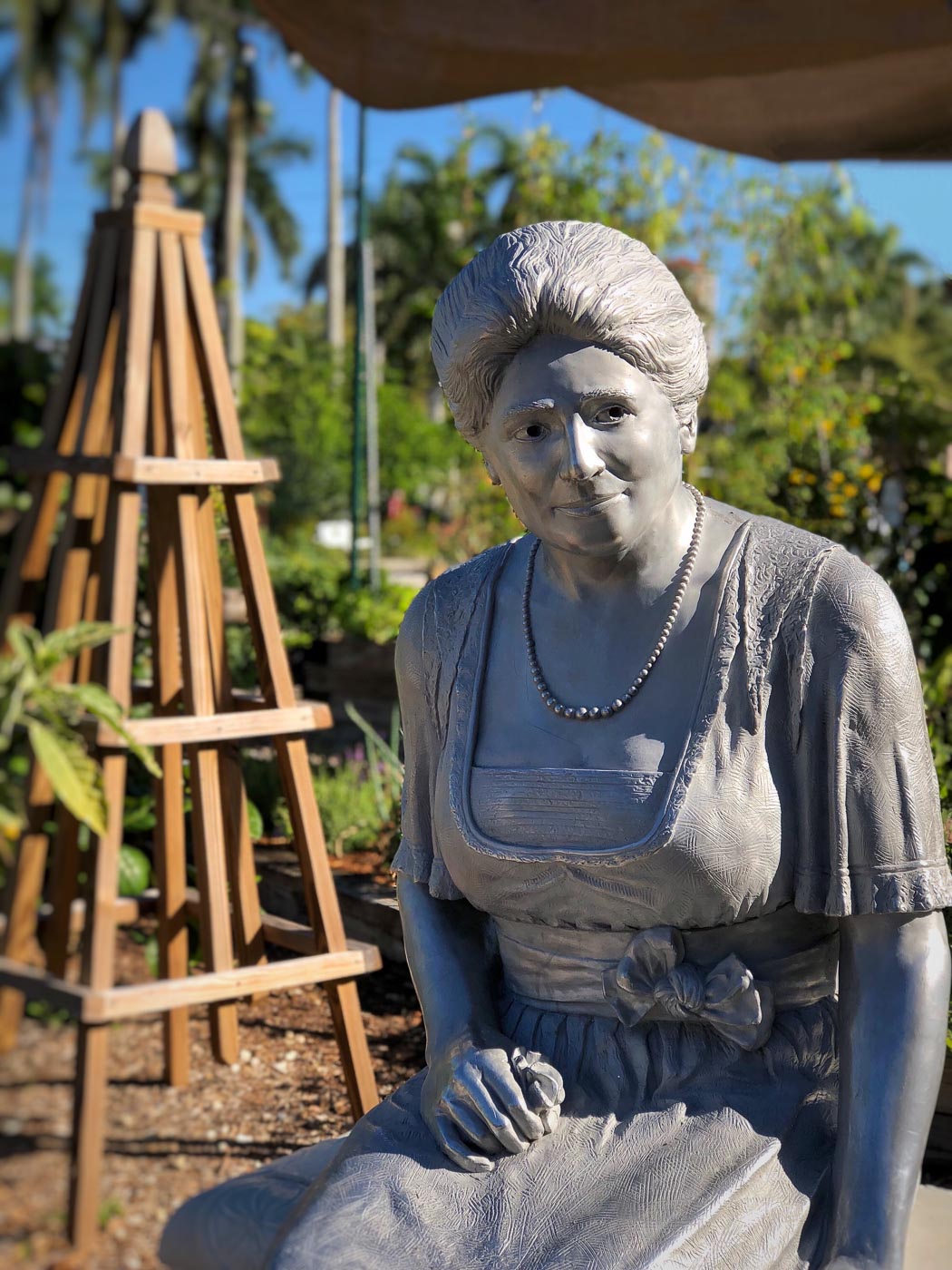
The sculpture of Mina Edison created by sculptor Don Wilkins.
Share this Post

